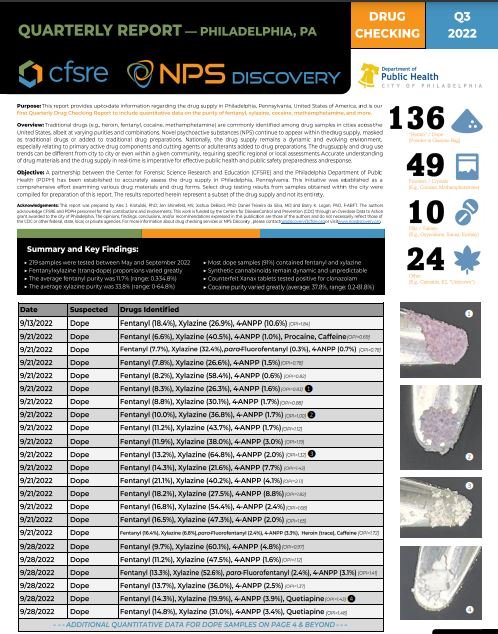
Changing Drug Supply
While opioids are present in most overdose deaths in Philadelphia, overdose deaths involving stimulants (like cocaine, crack, and methamphetamine), xylazine (a veterinary medication also called tranq), and other contaminants are also on the rise. In 2022, stimulants, both with and without opioids, were detected in more than 70% of overdose fatalities. The combination of stimulants and opioids can be unintentional, meaning the drugs were prepared together before being sold, or intentionally, meaning the person using the substances combined the drugs themselves.
Tranq was detected in 34 percent of fatal overdoses in 2022. Tranq was first seen in the drug supply in Puerto Rico in the early 2000s, and then in Philadelphia in 2006. SUPHR has put together a number of resources to share our knowledge, as an increasing number of municipalities in the United States are also struggling to address the concerns associated with tranq.
Want to learn more about xylazine? See our Xylazine (Tranq) page to learn about what people who use drugs should do to keep themselves safe, how healthcare and social service providers can support people using xylazine, and finally, how xylazine has impacted Philadelphia.
This year, multiple new drugs have been found in our drug supply. Stay up to date on all new substances by checking this page and our alerts and advisories page.
Drug Checking Program
Since September 2020, PDPH has partnered with the Center for Forensic Science Research & Education (CFSRE) to monitor the local drug supply. This drug-checking program provides information on what is in drugs in Philadelphia and allows SUPHR to provide information to the public and healthcare providers about the presence of xylazine, nitazene analogs, and other drugs and contaminants in the drug supply.
Drug Checking Reports









